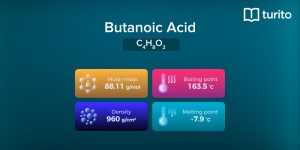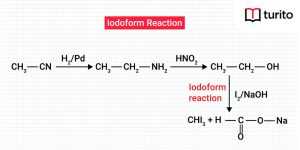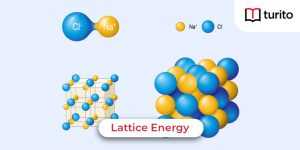Generally, students get confused between baking soda and washing soda. These are the common names of two different chemical compounds. One is sodium carbonate, while the other is sodium hydrogen carbonate.
Now, which one is sodium carbonate, baking soda or washing soda? Can you answer this? Or do you also get confused between them? What is the formula? What is the sodium hydrogen carbonate formula?
This section is about Sodium carbonate and its properties and uses.
What Is Sodium Carbonate?
Sodium carbonate is an FDA-approved food additive. It is sometimes called soda ash, washing soda, disodium carbonate, or soda crystals. Sodium carbonate, or soda ash, is a common ingredient in many manufacturing processes.
Sodium carbonate is a natural compound that can also be manufactured artificially. It is easily available at grocery stores, swimming pool supply shops, and hardware stores.
Sodium carbonate is an inorganic compound used as a moderately strong base. It is a key component of laundry soaps and many other household products.
Sodium Carbonate Formula and Structure
Sodium carbonate formula Na₂CO₃ is the disodium salt of carbonic acid. The molar mass is 106.0 g/mol. It is an ionic compound. It comprises a carbonate anion (CO₃⁻) and two sodium cations (Na⁺). It has a crystalline decahydrate structure.
The structure of sodium carbonate is given below:

Hydrates of Sodium Carbonate
Usually, sodium carbonate exists in three hydrates and an anhydrous salt state. These states are
1. Natron:
It is sodium carbonate decahydrate. Its chemical formula is Na₂CO₃·10H₂O. It readily crystallises to form a monohydrate.
2. Thermonatrite:
It is a sodium carbonate monohydrate. Its chemical formula is Na₂CO₃·H₂O. It is also called crystal carbonate.
3. Sodium carbonate heptahydrate:
It is not known in mineral form. Its chemical formula is Na₂CO₃·7H₂O.
4. Natrite:
It is anhydrous sodium carbonate and is also called calcined soda. On heating hydrates, it is formed. Another way of obtaining natrite is by heating sodium hydrogen carbonate.
Synthesis of Sodium Carbonate
There are five processes for synthesising sodium carbonate, i.e., Mining, Barilla and kelp, Leblanc, Hou’s, and Solvay process.
Among these five ways, the Solvay process is the most commercially used process for synthesising sodium carbonate.
The Solvay process:
An industrial chemist, Ernest Solvay of Belgian, developed a method in 1861 to produce sodium carbonate. The steps followed in the Solvay process are
Step 1: Production of sodium hydrogen carbonate:
In this step, sodium hydrogen carbonate and ammonium chloride are produced using ammonia, sodium chloride, and water. The chemical reaction that takes place was
NaCl + NH₃ + CO₂ + H₂O → NaHCO₃ + NH₄Cl
Step 2: Production of sodium carbonate:
In this step, it is converted into sodium carbonate by heating the sodium hydrogen carbonate formula NaHCO₃ from step 1. Water and carbon dioxide are released in this step.
2NaHCO₃ → Na₂CO₃ + H₂O + CO₂ ↑
Step 3: Recycling ammonia:
The ammonium chloride produced in step 1 is treated with lime, and the leftover carbon dioxide product is in step 2. The reaction that takes place is
2NH₄Cl + CaO → 2NH₃ + CaCl₂ + H₂O
The ammonia produced is recycled in the Solvay process. The only waste product in the Solvay process is calcium chloride, while brine and limestone are the only consumed substances. As a result, the process becomes substantially more economical than the other process.
Physical Properties of Sodium Carbonate
There is natural as well as artificial sodium carbonate available in the environment. Naturally, it occurs in arid regions, especially in mineral deposits found when periodic lake water evaporates.
It is made from Trona, a two-salt solution. Some other physical properties are
- It is a white crystalline solid substance.
- It’s molar mass is 105.99 g/mol.
- It is odourless, tasteless, and highly soluble in water.
- The boiling point of Na₂CO₃ is 1600°C, whereas it decomposes at 851°C.
- It is basic or alkaline as it turns red litmus to blue.
- The density of sodium carbonate is 2.54 g/cm³.
- It is one of the few water-soluble metal carbonates.
- One of its rarely occurring forms is called natrite.
Chemical Properties of Sodium Carbonate
Some chief chemical properties of sodium carbonate are
1. Effect of heat:
There is no effect of heat on anhydrous sodium carbonate. It melts at 852°C without disintegrating.
2. Effect of hydrolysis:
During hydrolysis, OH⁻ ions are released into the solution. These ions make the its solution slightly alkaline.
Na₂CO₃ + 2H₂O → H₂CO₃ + 2Na⁺ + 2OH⁻
3. Effect of carbon dioxide:
Aqueous sodium carbonate absorbs carbon dioxide and produces sodium hydrogen carbonate.
Na₂CO₃ + H₂O + CO₂ → 2NaHCO₃
4. Effect of vegetable acids:
When mild acids like lime juice react with sodium carbonate, carbon dioxide is formed.
Na₂CO₃ + 2HCl → 2NaCl + H₂O + CO₂
- It has detergent properties through saponification, which makes fats and grease water-miscible.
Uses of Sodium Carbonate
1. Water softening:
Sodium carbonate helps soften water by removing Ca²⁺, Mg²⁺, and other ions that make it hard water. When all these ions are treated with carbonate ions, they form insoluble solid precipitates. Furthermore, soft water has many benefits. It reduces soap wastage, increases the life of pipes and fittings, and keeps them safe from rust.
2. Glass manufacture:
Soda ash and caustic soda are required in the manufacture of glass. Sodium carbonate, Na₂CO₃, serves as a silica flux. It reduces the melting point of the mixture without unique materials and inexpensively achieves ‘soda-lime glass.’
3. Food additives and cooking:
Sodium carbonate is a food additive that acts as an anticaking agent, acidity regulator, stabiliser, and raising agent. It has a variety of culinary applications. It is also added to some food items to enhance their taste.
4. Some other uses:
It is used in the brick industry as a wetting agent to reduce the amount of water needed to extrude the clay. Many dry soap powders contain Na₂CO₃. Moreover, it acts as a foaming agent and an abrasive in toothpaste. It is also used as a strong base in a variety of applications.
Summary
What is sodium carbonate? In short, It is a disodium salt of carbonic acid with the chemical formula Na₂CO₃. The molar mass is 105.99 g/mol. There are two ways to synthesise.
It is useful for various purposes at home as well as commercially. It is used to manufacture soap, glass, and other chemicals. It also acts as a pH adjuster.
Although a low concentration cannot harm the skin, an aqueous form is highly reactive and corrosive. It can cause significant skin and eye irritation. So, it is necessary to handle it with care and safety.
Frequently Asked Questions
1. What are the symptoms of sodium carbonate poisoning?
A. Although sodium carbonate is harmless when taken in small quantities, too much can cause poisoning. Some symptoms of poisoning include
- Breathing problems
- Vomiting
- Diarrhoea
- Low blood pressure
- Eye irritation
Hence, handle it with care.
2. Is sodium carbonate toxic?
A. It is generally harmless when it comes in contact with the skin. However, solutions made with sodium carbonate can be corrosive. Although small amounts are not toxic, too much can cause poisoning. Still, for the most part, It has a low risk of toxicity.
3. What happens when sodium carbonate is ingested orally?
A. Ingesting sodium carbonate would not add a load of sodium to your body. Even your intake amount is far lower than the sodium in your food. When you ingest it orally, it gets mixed with the water in your body and acts as an antacid. It will neutralise gastric acid in your stomach. But it is not commonly prescribed for this purpose.
4. How much sodium carbonate should be added to the drinking water to avoid corrosion?
A. Sodium carbonate is often added to water in some quantity to change its pH and alkalinity. Normally, it is added in the range from 1 ppm to 40 ppm in the process of corrosion control. This amount is insignificant compared to the natural amount in the food and drinks.
5. What steps are involved in the Leblanc process of sodium carbonate manufacturing?
A. In this manufacturing process, three steps take place. These are
Step 1: Sodium chloride is treated with sulfuric acid.
2NaCl + H₂SO₄ → Na₂SO₄ + 2HCl
Step 2: Sodium sulphate is heated with coal.
Na₂SO₄ + 2C → Na₂S + 2CO₂
Step 3: Sodium sulphide and calcium carbonate are treated in this final step.
Na₂S + CaCO₃ → Na₂CO₃ + CaS
6. What are the materials involved in the Solvay process?
A. The major materials employed in the Solvay process are inexpensive and easily available. They are
- Brine, or sodium chloride solution:
NaCl provides Na⁺ ions during the production of sodium carbonate. Brine is available in abundance on the earth. It can be easily collected from both the ocean and inland.
- Limestone, or calcium carbonate:
CaCO₃ provides CO₃⁻ ions in the manufacturing of Na₂CO₃. It is readily available from mining.
- Ammonia:
NH₃ is made industrially by Haber’s process. It is expensive but can be recycled in the Solvay process.

Relevant Articles
Butanoic Acid – Structure, Properties, Uses
Butanoic Acid The carboxylic acid, butanoic acid, has the structural …
Butanoic Acid – Structure, Properties, Uses Read More »
Read More >>What is Iodoform? Characteristics and Uses
Iodoform The formula for Iodoform is CHI3. It is biotic …
What is Iodoform? Characteristics and Uses Read More »
Read More >>Lattice Energy – Explanation, Factors & Formulas
Lattice Energy Lattice energy evaluates the intensity of the ionic …
Lattice Energy – Explanation, Factors & Formulas Read More »
Read More >>Lead Acetate – Definition, Properties, Uses
Lead Acetate Have you ever licked lipstick when you sketch …
Lead Acetate – Definition, Properties, Uses Read More »
Read More >>




















Comments: